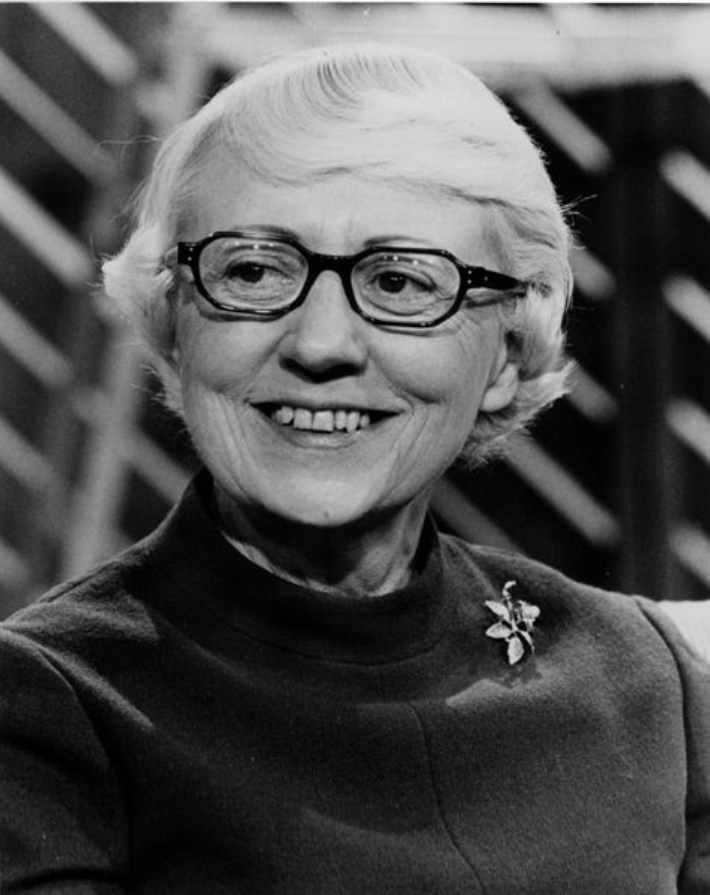DUSTAN, HARRIET PEARSON (1920- 27 June 1999) was a pioneering internal physician working out of Cleveland, Ohio. Dustan primarily focused on the prevention and mediation of hypertension and helped transform hypertension into a treatable disease. Additionally, Dustan helped pave the way for future female physicians and medical researchers throughout her career. She was the first woman elected to the Board of Governors of the American Board of Internal Medicine, earned various awards and accolades, and has several awards named in her honor.
Born and raised in Craftsbury Commons, Vermont by parents Helen Paterson and William Lyon Dustan, Harriet Pearson Dustan attended high school at Craftsbury Academy. She received both her undergraduate and medical degree from the University of Vermont, finishing her schooling in 1944. She interned at the Mary Fletcher Hospital, which has since been renamed to the Medical Center Campus at Fletcher Allen Health Care, before completing her residency at Montreal’s Royal Victoria Hospital in 1946. After her return to Vermont, she worked with the Bishop DeGoesbriand Hospital in Burlington to create a medical student education program for future physicians.
In 1948, Dustan left Vermont to work for the CLEVELAND CLINIC FOUNDATION in the Hypertension Research Department, under Dr. IRVINE PAGE. During her time at the Cleveland Clinic, Dustan was on the cutting-edge of hypertension research. She primarily focused on the prevention of hypertension rather than its treatment and is believed to have pioneered research in almost all forms of anti-hypertensive agents. Dustan continued Page’s work on serotonin; although the molecule is now known as a neurotransmitter, researchers were first interested in its role as in vasoconstriction, or the narrowing of arteries. Dustan was one of the first to connect high-sodium diets and increased risk of hypertension. She suggested that low-sodium diets could be a preventative measure against high blood pressure, a practice that is still used in the present day.
Dustan also examined the manner in which race influenced health outcomes; in one paper, she noted that Black patients were more likely to develop hypertension than their white counterparts. Additionally, Dustan stated that Black patients who developed hypertension were more likely to suffer more severe cases than white patients. Dustan also drew connections between keloids, which occurs more often in POC, and nephrosclerosis, which is the hardening of arteries’ walls.
Dustan became the second-ever woman to serve as the President of the American Heart Association from 1975-1976. In 1977, she left the Cleveland Clinic to work as the Director of the Cardiovascular Research and Training Center at the University of Alabama School of Medicine. While there, she became the first editor-in-chief of Hypertension, a research journal dedicated to the disease that was founded in 1978. During her five-year tenure, Dustan had to develop the journal’s reputation; at first, major researchers like the Cleveland Clinic refused to publish their articles through an unknown journal. However, by the time she stepped down from the position, the journal was able to publish an issue each month and received hundreds of submissions each year.
She remained at the University of Alabama School of Medicine until 1987. After leaving, she worked as one of twelve Distinguished Physicians of the United States Veterans Administration for three years. Upon her retirement, she moved back to Vermont, where she worked as a visiting professor at her alma mater, the University of Vermont College of Medicine. She also participated in various panels with the National Institutes of Health, where she helped create national health guidelines.
She received the Mastership in the American College of Physicians in 1977. In 1994, she would receive the John Phillips Memorial Award from the same organization. Additionally, the group would rename the ‘American College of Physicians Award’ to the ‘Harriet Pearson Dustan Award’ in honor of her in 2018. The Council of High Blood Pressure Research and American Heart Association would also name an award after her in 2008. In 1998, Dustan received the Distinguished Service Award from the American College of Cardiology. Sources have claimed that she was a member of most honor societies then-available to physicians. She received countless awards and honorary degrees throughout her career and was respected by her peers, students, and patients alike.
Dustan remained a private person throughout her life, keeping her personal life from the public eye. However, her legacy remains apparent throughout the field thanks to both her research and service in the field. Following her passing, colleagues emphasized her desire to help the communities she lived in and her dedication to her patients and their health.
Michele Lew
Last updated: 11/30/2022
Dustan, Harriet Pearson. “The Beginnings of Hypertension.” in Hypertension 33, no. 2 (1999): 609-610.
Dustan, Harriet Pearson. “Does Keloid Pathogenesis Hold the Key to Understanding Black/White Differences in Hypertension Severity?” in Hypertension 26, no. 6 (1995): 858-862.
Frohlich, Edward D., Harriet P. Dustan, and F. Merlin Bumpus. “Irvine H. Page: 1901-1991: The Celebration of a Leader.” in Hypertension 18, no. 4 (1991): 443-445.
“Innovation in Our DNA - Part 3: Ushering in the Modern Era of Heart Care.” Cleveland Clinic.
“Harriet Dustan Award: Sponsored by the Council on Hypertension.” American Heart Association.
Oparil, Suzanne. “Harriet Pearson Dustan.” in Circulation 100, no. 21 (1999): 2122-2123.
Frohlich, Edward D. “Harriet Pearson Dustan.” in Hypertension 34, no. 2. (1999): 162-163.
“Dr. Harriet Pearson Dustan.” Changing the Face of Medicine. Last updated June 3, 2015. https://cfmedicine.nlm.nih.gov/physicians/biography_362.html


